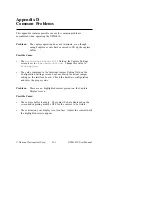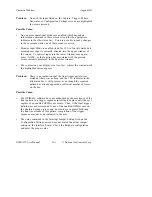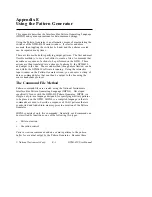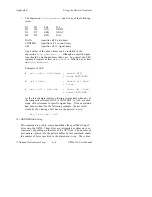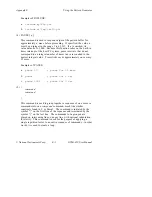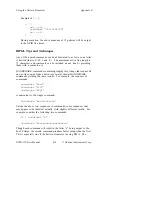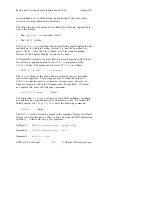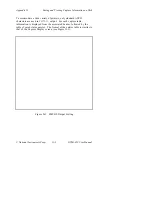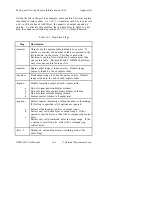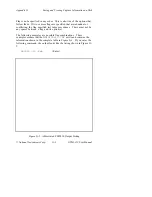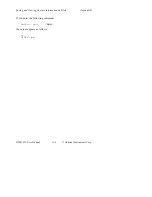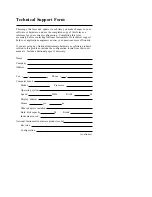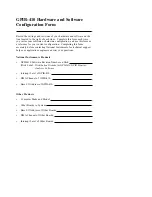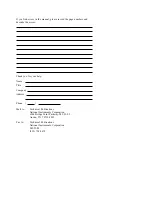
© National Instruments Corp.
G-1
GPIB-410 User Manual
Appendix G
Saving and Viewing Capture
Information on Disk
This appendix describes saving and viewing capture buffers on disk.
Also included is a description of the
FMT410
utility.
The following two functions are available on the Capture Settings
screen for saving captured status information to a file on disk.
•
The
Auto-write
function
•
The
Immediate Write
function
The
Auto-write
function is used while capturing is enabled to save
the contents of the GPIB-410 capture buffer automatically each time the
buffer is full or when the capture operation is terminated. The pathname
of the file to receive this information is specified in the field at the
bottom of the Capture Settings screen. This function is useful when you
want to capture and retain more status entries than will fit in the capture
buffer at one time. Before you initiate any capture activity that you
wish to save, you must enable this function by selecting
yes
in the
Auto-write each pass
field on the screen.
The
Immediate Write
function, which is activated by pressing <Alt-
W>, saves the current contents of the capture buffer to the specified file
on disk. This function is used to save captured status information after
the capture activity has already completed. In addition, by using the
Buffer range for <Alt-W>
field, you can elect to save the
contents of the entire buffer or just a portion of it.
With either of the above techniques, information is saved to the capture
file in exactly the same manner. If the specified file already exists, it is
overwritten when the write operation is initiated. Otherwise, it is
created.
The saved block, or table, of status entries is preceded in the file by a
binary header that contains information about the size of the table and
the configuration of the GPIB-410 software at the moment that the
capture was started. Like the header, the capture table is also stored in
binary to reduce the size of the overall file, as well as improve the
speed and efficiency of the write operations. The size in bytes of the
table is equal to the total number of entries saved times two. Data bytes

